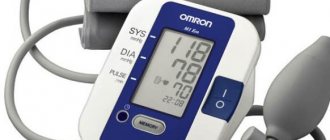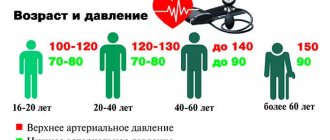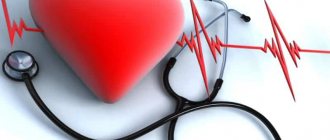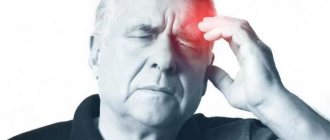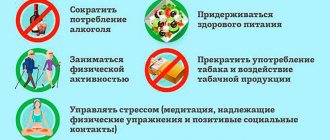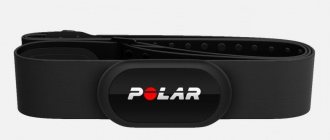Is it possible?
The rhythmic contractions of the heart can tell a lot about our body and blood pressure in particular. It is important to take into account that they depend on many factors - time of year and day, mood, age. The normal heart rate differs between people of retirement age and teenagers, between obese and thin people, in the morning and in the evening.
The measurement results can be distorted by the presence of diseases such as atherosclerosis, age-related changes in blood vessels, diseases of the endocrine system, heart failure, etc. Some of these pathologies will indicate low blood pressure, and some, on the contrary, high blood pressure. Accordingly, the data obtained during the measurement process will not be reliable.
Answering the question whether it is possible to obtain accurate numbers by measuring the pulse on the hand, it must be said that this is impossible. All information obtained in the process is indirect. Moreover, in emergency situations, when there is no time to measure the pulse with a tonometer, such diagnostic tactics provide sufficient information about the state of a person’s health.
Blood pressure with rapid heartbeat
With tachyarrhythmia, for example with atrial fibrillation, the pulse rarely increases, while the heart rate increases significantly (pulse deficiency), which is traditionally accompanied by a tendency to decrease blood pressure. With ventricular tachycardia or ventricular fibrillation, the pulse on the radial artery may not be felt (or it is thread-like), while blood pressure tends to zero.
These contradictions do not allow the formation of universal and understandable rules for patients, which makes it impossible to explain to them what properties of the pulse determine the level of blood pressure. Any such initiatives are dangerous, and all medical issues should be resolved by a professional, guided by criteria and scientific knowledge. It is necessary to cut down any attempts at unqualified assessment of cardiac parameters
Methods of measurement without a tonometer
To measure blood pressure without a machine, it is important to calm down and take a comfortable position. If there are jewelry, bracelets or watches, they must be removed. It is also important to avoid physical activity and not eat for half an hour. Next, perform the following manipulations:
The right hand is placed on the left wrist and the point where the pulsation is best heard is felt.- Do not move or speak; the hand used to measure the pulse should be at the level of the heart.
- The time is noted and the heartbeats are counted for 30 seconds. We multiply this number by 2.
- Next, the results are compared.
If the pulse is less than 60 beats, then the blood pressure is low. Numbers 60-80 indicate normal blood pressure.
If your heart rate is more than 90 times per minute, you should immediately call an ambulance.
Another interesting method for diagnosing high and low blood pressure is pressing on the wrist. In hypertensive patients, when pressing on the hand, the pulsation is felt more strongly. With hypotension, squeezing the wrist slows the pulse and makes it feel weaker.
You can check your blood pressure at home using a thread and a ruler. This is a rather unusual method, but the results are correct, albeit with errors of several units.
You need to take a 20 cm long ruler, a thread and a ring. The ruler is placed so that mark 0 is on the wrist, and the end is on the elbow. The ring is put on a thread and, holding the resulting pendulum by the tip, it is brought to the ruler. Move the thread with a ring from 0 to 20 slowly, without sudden movements. The closer the ring is to the ruler, the more accurate the results.
At a certain point, you will notice that the pendulum begins to move to the sides. This figure is multiplied by 10. When measured using this method, the first digit will indicate the diastolic pressure. To obtain information about the systolic indicator, the pendulum continues to be moved along the ruler. There is no need to start from 0. The second number at which the ring begins to swing or rotate will be the top pressure. It should also be multiplied by 10.
Normal pressure
This parameter may vary slightly in different situations. Thus, during physical activity or anxiety, blood pressure usually increases, and during sleep it decreases.
Normal pressure (NP) is that measured at rest. It can change during a person's life.
Thus, in childhood the lowest BP values are observed – (100/60), and with age the pressure increases. It also changes during the period of hormonal surge in adolescents or during pregnancy.
Indicators of normal blood pressure are very individual, but they differ slightly from the baseline (120/80): by 5 points over ten years. ND is rare in older people, usually in old age it is 150/90.
Therefore, in medicine, the concept of working pressure is accepted, which, although slightly different from the norm, still makes a person feel quite comfortable. For example, if your operating pressure of 90/65 suddenly rose to 120/80 (considered normal), how would you feel? That's right - headache and general weakness.
Possible mistakes
Many people, when trying to measure blood pressure using their pulse rate, make mistakes and, as a result, receive false information about the state of their health. During diagnosis, it is necessary to take into account not only the number of heartbeats, but also their rhythm.
Sometimes it is arrhythmias that provoke pressure surges and in this case drug treatment is required. As soon as the heart muscle normalizes its rhythm, the unpleasant symptoms will disappear.
It is also a common mistake to measure your heart rate only from your wrist. The heartbeat can also be clearly heard in other areas - under the knee joint, on the temples, on the neck. It is important to compare the indicators obtained at different points and only then draw conclusions. Strong pulsation on one arm and weak pulsation on the other cannot be considered normal. Only a doctor can accurately calculate blood pressure using the pulse.
The inability to correctly interpret the data received or measure the pulse will lead you to many negative thoughts, which, as a rule, are one of the main causes of pressure surges.
What is pressure
Pressure represents the amount of blood supply and movement through the vessels. Depending on the health of body functions, pressure may vary. The indicator is considered individual, but the approximate norm is 120 to 80.
Blood pressure depends on the amount of fluid moving through the vessels. In this regard, there are factors that can influence the excess of this indicator.
An increase in the amount of fluid occurs for the following reasons:
Retention of excess moisture in the body occurs due to excessive salt consumption. For example, drinking a large amount of beer together with a salty snack in the morning will provoke swelling of the face, and the excessive load on the blood vessels will remain an invisible problem. You should avoid eating sausages, canned food, and smoked foods. Atherosclerosis is also a cause of fluid retention, since the disease refers to blockage of blood vessels, their slagging. Avoiding trouble will help you avoid fatty foods and follow a diet based on proper nutrition. Hormonal imbalance is also one of the reasons for the insufficient functioning of blood vessels and the retention of excess in the body. At the same time, there is a decrease in the speed of all existing processes in the body. Overeating and increased water consumption affect the amount of fluid moving through the vessels. Bad habits: smoking and alcohol affect the health of blood vessels, gradually narrowing the lumen. This reduces the quality of blood circulation in the body.
Characteristic symptoms
In addition to calculating the pulse, you can determine high or low blood pressure by observing a person’s well-being. There are a number of symptoms that indicate hypertension or hypotension. Signs of high blood pressure include:
- significant redness of the face;
- dizziness;
- pain in the heart area;
- pulsation in temples;
- feeling of lack of air.
With low pressure, hands tremble, drowsiness, lethargy, pain in the back of the head appear, dizziness, nausea and vomiting may occur. All these symptoms must be taken into account when measuring blood pressure without a tonometer. They may appear separately or all together. At an early stage, hypotension and hypertension always look like ordinary overwork.
It is important to note that such signs of deterioration in health may indicate not only surges in blood pressure, but also the development of serious diseases of the cardiovascular system, so do not hesitate to go to the doctor. By postponing the visit, you deliberately provoke the progression of the pathology.
Pulse and blood pressure measurement
Pulse
examine with two fingers on the radial, temporal or carotid arteries (Fig. 46). In children under 1 year of age, the pulse is usually determined on the temporal artery, and in children over 1.5 years old, as a rule, on the radial artery. The pulse is determined at rest (possibly during sleep), beats should be counted within a minute. If pulse impulses follow one after another at equal intervals, then such a pulse is called rhythmic. If the time intervals between beats are unequal, they speak of an irregular rhythm, or arrhythmia. If an arrhythmia is detected, you must inform your doctor. Pulse data is noted on the temperature sheet.
To monitor pulse in an intensive care unit or outpatient setting, special sensors are currently widely used - pulse oximeters (Nonin
etc.), allowing to measure heart rate and peripheral blood oxygen saturation in the ranges from 18 to 300 beats/min and from 0 to 100%, respectively. Use flexible, reusable sensors
1 The amount of urine excreted from the body over a certain period of time.
Rice. 46. Pulse detection:
a - on the radial artery; b - on the temporal artery; c - on the carotid artery
Rice. 47. Sensor options for pulse oximetry
although there are also sensors that can be used multiple times. The sensor is placed on a child's finger or big toe, and for newborns - on the foot (Fig. 47). To ensure comfort when performing pulse oximetry, the use of special sensor springs of a clip design, special hydrogel materials, adhesive patches for fixing sensors that do not cause skin rash and compression of soft tissues, and an alarm system are provided. The measured values are stored in the device’s memory. Arterial pressure
measured using devices with spring manometers - tonometers and mercury sphygmomanometers
Riva Rocci (Fig. 48). There are systolic (maximum) and diastolic (minimum) blood pressure, i.e. blood pressure on the walls of blood vessels during systole and diastole. Normal blood pressure values vary depending on the age of the children, time of day, state of the nervous system, etc.
To roughly calculate blood pressure (in millimeters of mercury) in children over 1 year old, you can use the following formulas:
- systolic = 90 + 2 p;
- diastolic = 60 + n, where n -
age in years.
Blood pressure can be measured with the patient sitting or lying down after 5-10 minutes of rest. A cuff is tightly placed on the bare shoulder above the elbow. A phonendoscope is applied above the pulsation site of the ulnar artery in the area of the elbow bend. Gradually pump air into the cuff with a balloon, recording the moment when the sound of blood pulsation in the vessel disappears. After this, a few more pumping movements are made. Then you should gradually reduce the pressure in the cuff by slightly opening the cylinder valve. At the moment of sound booms, the pressure gauge reading is recorded. The first short but rather loud sound boom corresponds to the value of systolic pressure. With a further decrease in pressure in the cuff, the sounds gradually weaken. The moment of disappearance of sound beats, which characterizes diastolic pressure, is also recorded.
Providing emergency assistance. With diseases of the cardiovascular system, children can quickly develop heart failure with the occurrence of venous stagnation. The patient develops palpitations and shortness of breath, which require assistance.
For shortness of breath
The patient is helped to take a comfortable sitting position, which makes breathing easier. To do this, place several pillows under your back or raise the head of a functional bed. A child with shortness of breath is provided with a maximum influx of fresh air or given oxygen, while at the same time freeing him from constricting clothing and a heavy blanket.
The appearance of acute cardiovascular disorders requires emergency care.
Fainting
- acute insufficiency of blood supply to the brain, expressed by a sudden short-term loss of consciousness. Before the doctor arrives, the child is laid horizontally or with
V
Rice. 48. Blood pressure measurement:
a — tonometer; b — mercury sphygmomanometer; c - correct application of the cuff
slightly lowered head end. Ensure free breathing: unfasten the collar, belt, relax clothing. Open windows and doors wide for fresh air. The face and chest are sprayed with cold water. They allow ammonia to be inhaled, for which the moistened cotton wool is brought to the external nasal passages. The body is vigorously rubbed, then warmed with heating pads, the lower half of the body and lower limbs are wrapped in a warm blanket. If there is no effect, medications are administered (subcutaneous caffeine, cordiamine). If these measures are ineffective, then mechanical ventilation is started.
In case of collapse,
developing as a result of acute vascular insufficiency and accompanied by a rapid drop in blood pressure with impaired blood supply primarily to the brain and heart, the patient’s condition suddenly worsens, weakness, pallor, cold extremities, chills, thready pulse, sweating appear.
rya consciousness. Without emergency medical care, the patient may die. Before the doctor arrives, the child is placed in a horizontal position, raising the lower end of the body, wrapped warmly, and warmed with heating pads. It is important to administer caffeine subcutaneously every 30-60 minutes, so an injection kit and an intravenous infusion system are urgently prepared (it may be necessary to administer other medications in addition to caffeine).
Pain in the heart area
rarely observed in children. It may be a manifestation of insufficient blood supply to the myocardium. Considering that mental stress and disorders of nervous regulation play a significant role in the genesis of pain in the heart, the main measures are aimed at creating conditions of comfort. For the same purpose, infusions of valerian, motherwort, drops of valocordin or valoserdin are used (the number of drops corresponds to years of life), etc.
Spasm of the coronary arteries as a cause of pain in the heart area in children is extremely rare. To exclude this pathology, the child is given nitroglycerin under the tongue. Mustard plasters are placed on the heart area, heating pads are applied to the legs and arms. From the moment complaints of pain in the heart area appear, a doctor is urgently invited.
Paroxysmal tachycardia
- arrhythmia in the form of sudden onset and also suddenly ending attacks of tachycardia. Emergency care is indicated in connection with a sudden disorder of myocardial function: the child feels strong and frequent heartbeats, experiences fear, tightness in the chest, pain in the epigastric region. The heart rate is 2-3 times higher than normal and can reach 180-200 per minute. To relieve an attack, techniques are used that irritate the vagus nerve: pressing on the eyeballs, the area of the carotid artery, the abdominal aorta, and artificially inducing vomiting. Immediately inform the doctor and prepare everything necessary for intravenous administration of medications.
Heart failure
possible with an intractable attack of paroxysmal tachycardia. In this case, the patient is immediately given mechanical ventilation and closed heart massage is started. At the same time, equipment and medications (adrenaline) are prepared to restore and stimulate cardiac activity.
Technique of indirect (external) heart massage.
The child is placed on a table or bed with a wooden board. Doctor or medical
the sister stands at the side of the child and places one hand with the palm on the lower third of the sternum, with the palmar surface of the other hand pressing on the sternum with such force that it bends towards the spine by 3-4 cm (Fig. 49). The heart is compressed between the sternum and the spine, while blood flows from the heart into the vessels - the aorta and pulmonary artery. In older children, the frequency of chest compressions should be at least 70 per minute, in newborns - 100-200. In newborns, cardiac massage is performed with two thumbs of both hands or with one hand, when pressure is applied with the index and middle fingers. Rhythmic compression of the chest in newborns and infants should lead to displacement of the sternum by at least 1-2 cm.
Rice. 49. Performing chest compressions on a newborn (a, b) and an older child (c)
The effectiveness of indirect cardiac massage is evidenced by the appearance of a pulse in the carotid, femoral and radial arteries, an increase in blood pressure, restoration of spontaneous breathing, and the appearance of a pink color of the skin and visible mucous membranes.
In case of acute respiratory failure, help consists of oxygen therapy, respiratory inhalation therapy, and mechanical ventilation.
Oxygen therapy is the most effective way to eliminate or reduce arterial hypoxemia (low oxygen levels in the blood).
Oxygen therapy is carried out for a long time - from several hours to several days, continuously, at a constant oxygen concentration in the inhaled air equal to 24-44%. The most important condition for oxygen therapy is compliance with the rules of asepsis. When using nasal catheters (sterile), it is better to use double curved cannulas made of soft plastic with two short extensions, which, having previously measured the size of the inserted catheter, are inserted into the nasal passages and fixed with an adhesive plaster on the cheek (Fig. 42, a, b). The supplied oxygen must be humidified, for which it is passed through sterile water using the Bobrov apparatus (Fig. 42, c).
In addition, face masks are used that create a certain concentration of oxygen. Oxygen chambers are of little use for controlled oxygen therapy. Plastic caps and head covers are more common. They can be equipped with an oxygen dispenser (suction device), providing a certain oxygen concentration, and a humidifier (Fig. 42, d).
Respiratory inhalation therapy
consists of performing assisted artificial pulmonary ventilation (IVL) in combination with inhalation therapy. VIVL is carried out using pressocyclic respirators such as “Chirologist-1”, “Bird-Mark-8”, “Pneumat”. The first two devices are equipped with a “response” system
Rice. 42. Oxygen therapy:
a — determination of the length of the inserted catheter; b — position of the catheter in the nasopharynx; c — Bobrov apparatus; g - oxygen dispenser
the patient's own inhalation and make it possible to perform IVL in a trigger mode. This method allows for targeted oxygen therapy and inhalation of aerosols in positive end-expiratory pressure mode. Respiratory inhalation therapy is of particular importance in the prevention and treatment of postoperative pulmonary complications.
Artificial ventilation
used to maintain gas exchange in the body. To perform this procedure, the child must be placed on his back with his head tilted back to improve airway patency; unbutton clothes that are constricting the chest. If there is vomit or mucus in the oropharynx cavity, they are removed using an electric suction. Contents from the oral cavity can also be removed with a finger, a napkin, etc.
To ensure free passage of the airways, the patient’s head is tilted back as much as possible, and the tongue is fixed if necessary (Fig. 43, a, b). One hand is placed under the neck, the other is placed on the forehead and mechanical ventilation is performed using the “mouth to mouth” (Fig. 43, c) or “mouth to nose” (Fig. 43, d) method. In the first method of mechanical ventilation, the person performing the manipulation takes a deep breath, presses his mouth tightly to the child’s mouth and blows in air, while pinching the nose with the first and second fingers. Exhalation occurs passively due to the elastic structure of the child's chest. With the mouth-to-nose method, air is blown through the nasal passages. With both methods, you need to inhale through your mouth and nose through a handkerchief or gauze. The frequency of mechanical ventilation should be at least 40 breaths per minute in newborns and 20 in older children.
Rice. 43. Technique of artificial lung ventilation. Explanation in the text
If the injured child is unconscious and his face is crushed or he is sick with polio, rabies, AIDS, tetanus, then mechanical ventilation is performed using the Holger-Nielsen method (Fig. 44, a) or Sylvester (Fig. 44, b). The frequency of pressure on the shoulder blades (sternum) in school-age children is 16-20 per minute, and in preschool children - 20-30 per minute until spontaneous breathing occurs or the doctor arrives.
Rice. 44. Manual methods of artificial respiration: a — Holger-Nielsen method; b - Sylvester's method
In a hospital setting, a breathing bag with a mask (Ambu type) is used to maintain artificial respiration. The bag is equipped with a valve, which, when pressed on the bag, automatically closes, and all the air flows through the mask to the patient. The mask should tightly cover the patient's nose and mouth (Fig. 45). Ventilation is carried out by rhythmically pressing on the bag at intervals of about 2 s for passive exhalation.
Rice. 45. Ventilation using a breathing bag with a mask
The criteria for the effectiveness of mechanical ventilation are movements (excursions) of the chest during inhalation, “breathing” noise during exhalation, and the disappearance of cyanosis and marbling of the skin. The question of the advisability of continuing manual ventilation or connecting the patient to an artificial respiration apparatus is decided by the doctor.
Errors when determining pressure without a tonometer by pulse
Out of ignorance, an inexperienced person can make mistakes. If you do not have certain skills, then in most cases the procedure does not bring the desired results and the data turns out to be inaccurate.
With any physical activity, the heart rate increases. To ensure reliable measurements, you must rest for at least 15 minutes.
Most often, many people make mistakes such as:
- Incorrect pulse detection. First of all, it is worth considering that when measuring you need to pay attention not only to the heart rate, but to the rhythm. The pulse should be even, with a certain period of time between each beat.
- Measurement on one hand. In this case, measurements must be taken on both hands, taking into account even very weak pulsation.
- Incorrect diagnosis. Often people are diagnosed with high blood pressure after measuring only on their hands. In fact, in order to determine blood pressure as accurately as possible, you need to take measurements on two hands and in the area of the popliteal fossa.
How to measure blood pressure without a tonometer?
Nowadays, many devices have been created that can measure blood pressure almost instantly.
Almost everyone has a similar device at home. However, an important point is the ability to determine blood pressure without a tonometer, because an unpleasant situation can happen anywhere.
First of all, you need to know the main signs of deviations from the norm, since it is almost impossible to feel these changes with your body.
So, the symptoms of high blood pressure are as follows:
- dizziness or headache;
- interruption of heart rhythm and rapid pulse;
- nausea and shortness of breath;
- heavy sweating;
- severe redness of the face and/or neck.
If your blood pressure drops, on the contrary, you will experience the following symptoms:
- drowsiness and weak pulse;
- poor coordination;
- pain in the back of the head;
- fainting state;
- lack of oxygen.
Any of these manifestations should serve as a signal to action: you urgently need to measure your blood pressure.
Remember that blood pressure values should be monitored in both arms, since even a slight difference in readings may indicate existing cardiovascular pathologies.
How to determine blood pressure by pulse - measurement technique
Before the procedure, the patient must sit comfortably in a chair. The back is pressed against the backrest, the legs are on a hard surface. 30-40 minutes before the measurement you should not smoke, drink alcohol, be nervous, or play sports. Before measuring, the arm is bent at the elbow and placed at heart level. During the session you cannot move or talk. Next, you need to:
- Place a watch or a special stopwatch in front of you.
- Take several deep breaths and exhalations.
- Place two fingers of your right hand on the pulse point of your left wrist.
- Count the number of beats in 30 seconds, and then double the result.
- Record the data in a notebook.
- Repeat the procedure on your right hand and write down the results.
There are a lot of pulsating points for determining pressure. The most commonly used pulse is the radial artery in the distal forearm.
You can count the beats in 30 seconds and double them, but experts say that more accurate results are obtained after listening to the pulse for 60 seconds. This is due to the fact that in cardiovascular pathologies the pulse can change frequently, so it is better to measure it over the course of a minute.
Why do you need to measure blood pressure?
High blood pressure can now also affect young people. The problem of hypertension is acute, and this can lead to irreversible consequences. Symptoms of hypertension:
Floaters before the eyes; Tinnitus; Redness of the skin; Irritability; Chills; Sleep problems; Anxiety; Deterioration of vision; Weakness; Deterioration in performance and memory; Cardiopalmus; Sweating; Headache; Dizziness; Nausea.
Symptoms can appear separately or in combination for a short time, pass after sufficient rest and return with renewed vigor. It is easy to miss the disease at the initial stage, since it looks like ordinary overwork.
When you contact a specialist on time, you have a chance to get rid of symptoms and forget about the disease by adjusting your lifestyle.
Advanced hypertension may one day manifest itself with an attack; the outcome may be complicated by the following disorders:
Stroke; Heart attack; Brain swelling; Pulmonary edema; Death.
A hypertensive crisis is characterized by a sharp deterioration in health, obvious manifestation of symptoms, including vomiting. When it occurs, you should call an ambulance. While waiting, the patient needs to take a comfortable position, calm down, relax, and, if necessary, take a sedative and an extra dose of medication for hypertension. A cold compress is applied to the forehead and heating pads are applied to the legs for 15 minutes.
Low blood pressure: pulse rate and rhythm, additional symptoms
Of course, a tonometer shows more accurate results, but in its absence, you can use a kind of “live” measuring device - the pulse. After the pulse measurements are made, you need to make a calculation and correlate the data obtained with the symptoms.
If the pulse is below 60 beats per minute, then such data usually indicates low blood pressure. In this case, the patient may feel unwell and most often present:
- Weakness and drowsiness;
- Mood swings (most often apathy);
- Constant fatigue;
- Decreased performance;
- Nausea;
- Often headaches.
At the initial stage of hypotension, the pulse rate and rhythm may be normal, but during pregnancy the pulse may even be increased due to increased blood flow. If a person has pathologies of the heart, blood vessels and endocrine system, then hypotension can also be accompanied by increased pulse pressure up to 70-90 beats per minute.
Heart rate varies depending on age
In addition, an increase in heart rate (heart rate) can occur due to:
- Stress suffered;
- Consumption of alcoholic beverages;
- Serious illnesses suffered;
- Taking any medications;
- Anemia.
When measuring blood pressure by pulse, it is worth taking these factors into account in order to determine blood pressure readings as accurately as possible. If within two to three days the heart rate remains 60 beats per minute, then you need to consult a doctor. Most often, this phenomenon signals pathological changes in the body.
Blood pressure measurement
The first device that made it possible to measure blood pressure was the Gales device. Its structure was quite simple. A tube with a needle at the end was attached to the scale with levels. It was injected into the vessel and the blood filling the device showed the parameter being measured.
Currently, the Korotkoff method is used to measure blood pressure. It is worth noting that this particular method is the only one among non-invasive techniques recognized by the World Health Organization. The Korotkov technique is based on the fact that the sounds that are heard during the measurement differ from the heart sounds caused by vibrations due to the closing of the valves. To correctly measure the pressure in blood vessels, you need to know the five phases described by Korotkov, namely:
- The appearance of the first tone, the intensity of which increases with the deflation of the cuff;
- Adding “blowing” noise;
- Noises and tones reach their maximum;
- Weakening of tones;
- Complete loss of tones.
To obtain blood pressure data, a stethoscope and a mechanical tonometer are required. The measurement itself is carried out in several stages:
- Place the cuff just above the cubital fossa;
- Place the stethoscope in the area of the cubital fossa;
- Inflate air into the cuff;
- Slowly release the air, listening carefully to the Korotkoff tones.
A person's systolic blood pressure corresponds to the first sound. Diastolic, in turn, is recorded in the fifth phase. After a complete examination, it is necessary to record which arm the measurement was taken on, as well as what results were obtained.
According to WHO recommendations, pressure measurements must be carried out twice. The second measurement is carried out approximately 2-3 minutes after the first. Experts highlight the features that arise when conducting research using the Korotkov method:
- Complete absence of sound between the first and second phases. The physiology of this process is explained by excessively high systolic pressure.
- Inability to listen to the fifth phase. Occurs when cardiac output is high. This situation occurs against the background of aortic insufficiency, thyrotoxicosis or fever.
- When taking measurements in older people, it is recommended to inflate the air in the cuff to a higher level. This is due to the fact that arteries become calcified with age. Due to the obstacle that arises, the cuff cannot completely compress the vessel. Stronger injection may lead to overestimation of readings. This condition is called “pseudo hypertension.”
- If the upper arm circumference is large, it becomes impossible to obtain a correct measurement result. To avoid this situation, you need to use a large cuff or measure blood pressure by palpation.
It is also worth remembering that when taking measurements in a lying position, there is a slight increase in readings, usually by 5-10 mmHg.
High blood pressure values occur even without the presence of a chronic disease. Thus, an increase in blood pressure is observed in the following cases:
- Drinking strong tea or coffee;
- Eating chocolate;
- Taking adaptogens;
- Excessive nervousness;
- Long waits in hospital queues;
- "White Coat Syndrome"
Such blood pressure is not stable and returns to normal values when the factor that caused its increase is absent.
A decrease in blood pressure figures compared to real values can also be observed if the measurement rules are violated, namely:
- The air inflation into the cuff is too weak to completely block the blood flow;
- The cuff deflates too quickly;
- Using an incorrectly selected cuff;
- Blood pressure measurement in the supine position;
When changing blood pressure numbers, you need to make sure that all manipulations were performed correctly, and before taking the measurement there were no factors influencing an increase or decrease in blood pressure. You need to understand that, knowing everything about blood pressure, you should not self-medicate. If any violations are detected, you should seek help from a doctor. Stabilizing blood pressure is a task that must be handled by a specialist.
Indicators for high blood pressure
Most often, high blood pressure is indicated by a pulse that is 80 beats per minute or higher. In this case, the patient may experience various symptoms, for example:
- Regular headaches;
- Breathing problems, often shortness of breath;
- Sleep problems;
- Excessive sweating;
- Pain in the chest and heart;
- Nausea and dizziness;
- Trembling of fingers;
- Ringing in the ears, darkening of the eyes.
Often, hypotensive patients and people with high blood pressure suffer from increased heart rate. In some cases, with hypertension, the pulse can be over 100 beats per minute. This almost always indicates the presence of serious disorders in the body. If you notice an increased pulse and these symptoms, it is best to immediately consult a doctor.
This may indicate that a person has problems with the thyroid gland, endocrine system, kidneys, heart and other organs. Perhaps the pulse pressure was determined incorrectly, but it is better not to risk your health and carry out diagnostics to exclude pathologies.
Find out your pulse pressure using your smartphone
Using a smartphone, it will be much easier to find out the pressure by pulse:
- modern gadgets have a stopwatch that will signal the end of the measurement;
- You can save the results of pulse measurements and thus make comparisons, the dynamics of increase/decrease in pressure.
Measuring pressure using the pulse is an absolutely inaccurate method and cannot be used as a diagnosis. But to understand how critical the fluctuation of indicators is, it is enough to know the simplest methods and those with a pendulum.
Measuring circuit
The work of blood circulation in the body depends on two main indicators.
There is a connection between them. Therefore, knowing the indicators of one, you can determine what is happening with the second. The pulse is more informative.
Important! It is impossible to determine exact blood pressure using pulse indicators alone. One can only guess in what interval the arterial column data is located.
The table shows the relationship between pulse rate and pressure.
| Pulse property | Low blood pressure | High blood pressure |
| Beats per minute | 50-60 beats/min - rare; 60-90 - regular; if the readings are higher, blood loss is possible | Accelerated pulse of 90 beats and above; if it is rare, then there is a risk of hemorrhage |
| Ripple strength | Can't be felt if you press lightly on the artery | You can feel it even when you press hard |
| Fullness | Calm, even | Hard, tense |
The pulse can be found on the vessel that is convenient to palpate:
- artery on the side of the neck, just below the jaw line;
- vessels near the wrist;
- on the elbow;
- in the groin area on the thigh.
The table presents data on heart rate norms, as well as its dependence on age.
| Age | Common heart rate |
| 20 | 70 |
| 25 | 70 |
| 30 | 70 |
| 35 | 70 |
| 40 | 70 |
| 45 | 70 |
| 50 | 74 |
| 55 | 74 |
| 60 | 79 |
| 65 | 79 |
The rhythm of the pulse and its frequency are inextricably linked. With low blood pressure, the patient experiences a reduced or normal heart rhythm. It doesn't even cause any discomfort. Many people do not realize that their heart rate is decreasing. If the patient has a history of heart disease or endocrine disease, the heart will beat faster, around 70-90 beats/min. During pregnancy, heart rate increases as general blood flow increases.
Your heart rate may increase due to:
- stressful situation;
- when drinking alcoholic beverages;
- during blood loss;
- dehydration;
- low hemoglobin level.
Signs in conditions of low blood pressure that should be taken into account when measuring pulse:
- dependence on weather conditions;
- increased drowsiness;
- fast fatiguability.
If the pulse deviates from the accepted norm with high blood pressure, this may be affected by:
- myocardial dysfunction;
- hormonal imbalance;
- presence of cholesterol plaques;
- irreversible processes in the walls of blood vessels;
- thick blood.
Pulse rates are about 70-90 beats/min. If they increase, this means the presence of an inflammatory process, anemia in the body. It is imperative to find out whether a rapid pulse affects the increase in blood pressure.
Features of drug therapy
Groups of drugs that are prescribed to normalize heart rate and blood pressure are presented in the table.
Table 7. What medications are prescribed?
| Group of drugs | Description |
| They help reduce the intensity of contraction of the ventricular muscles, reduce the permeability of cells to calcium ions. |
| Accompany a decrease in the permeability of cell membranes to sodium and calcium. The principle of action is similar to that of calcium channel blockers. |
| They help block signals from the sympathetic part of the nervous system. Affects cardiac receptors. Reduce the risk of relapse. |
| Change membrane permeability. Against this background, the transfer of electrical potential slows down. The most serious side effect is arrhythmia. |
High blood pressure and high pulse
The drugs prescribed to normalize the indications are presented in the tablet.
Table 8. Medications for high pulse and high blood pressure.
| A drug | Description | Price |
| Cardioselective blocker of alpha-blockers. Does not have an internal symptomatic, membrane-stimulating effect. It has a hypotensive, antianginal and antiarrhythmic effect. | From 20 rubles. |
| Non-selective beta blocker. It has antihypertensive, antianginal and antiarrhythmic effects. Prevents headaches and relieves tremors. | From 20 rubles. |
| ACE inhibitor. It has a powerful hypotensive effect and reduces platelet aggregation. | From 24 rubles. |
| The medicine belongs to the group of angiotensin-converting enzyme inhibitors. A complex drug that has a hypotensive and diuretic effect. Has a beneficial effect on the cardiac and vascular systems. | From 36 rubles. |
| A combined medicine with antispasmodic and sedative effects. The hypotensive effect is insignificant. | From 132 rubles. |
Note! Uncontrolled use of drugs in this group can cause adverse consequences caused by a sharp drop in blood pressure.
High pulse and low or normal blood pressure
Drugs that reduce heart rate and do not affect blood pressure are presented in the table.
Table 9. Decrease in heart rate without decrease in blood pressure.
| Medicine | Description | Price |
| Tranquilizer, benzodiazepine derivative. It has an anxiolytic, muscle relaxant and antiepileptic effect. It has a slight sedative effect and relieves psychoneurotic tension. | 167 rubles. |
| It has anxiolytic, sedative-hypnotic, anticonvulsant and central muscle relaxant effects. Helps enhance the inhibitory effect of GABA on the transmission of nerve impulses. | 91 rubles. |
| A herbal preparation that has an antispasmodic and moderate sedative effect. Can be prescribed to children. | 245 rubles. |
Low pulse and high blood pressure
The patient is prescribed antihypertensive drugs. Drugs that directly reduce heart rate are not prescribed. When taking medications of this group, it is necessary to control the heart rate, avoiding bradycardia.
Table 10. Drugs that normalize pulse without increasing blood pressure.
| Medicine | Description | Price |
| ACE inhibitor. Stops the “birth” of angiotensin. Helps reduce peripheral vascular resistance and afterload. Normalizes blood pressure. Accompanies a decrease in preload and pressure in the pulmonary circulation. | 311 rubles. |
| A good antihypertensive drug. Inhibits ACE activity and helps reduce the formation of angiotensin II. | 128 rubles. |
| Prodrug. The hypotensive effect appears within 1-60 minutes after application. The maximum occurs after 4-8 hours. The effect lasts throughout the day. | 116 rubles. |
| It is a thiazide diuretic. Promotes disruption of the reabsorption of sodium, chlorine and water ions in the distal tubules of the nephron. Retains calcium ions in the body. Accompanies a decrease in blood pressure, an increase in the excretion of potassium, magnesium, and bicarbonate ions. The onset of the diuretic effect is observed after 120 minutes. The duration of the effect is 12 hours. | From 50 rubles. |
| Peripheral vasodilator. By reducing peripheral vascular resistance, it reduces blood pressure. Helps dilate peripheral veins and reduce afterload on the heart. | From 169 rubles. |
| It is a selective competitive blocker of postsynaptic alpha-adrenergic receptors. Promotes the expansion of peripheral blood vessels. This leads to a decrease in peripheral vascular resistance and a decrease in blood pressure. | From 167 rubles. |
Additional therapies
With the same pulse and blood pressure readings, one person feels normal, while another feels bad. The label provides information about additional therapeutic measures.
Table 11. Additional measures.
| Indicators | What should I do? |
| Normal work and rest schedule, sleep at least 8 hours, sports activity. It is advisable to visit the pool 2 times a week. |
| Get enough sleep, exercise, fill your diet with seasonal fruits, berries, and vegetables. |
| Daily Holter ECG monitoring is necessary. Only a doctor can prescribe medications. |
| 30 drops of Valocordin will help quickly bring your indicators back to normal. |
| This is a dangerous condition that may signal an infection. The patient requires urgent medical intervention. |
How to measure
An abnormal heart rate may indirectly indicate problems with blood pressure
The study takes into account factors such as the person’s heartbeat, that is, its pulsation. If a person wants to know how to determine blood pressure without a tonometer, he must have an understanding of these concepts.
Pulse diagnostics follows a specific plan. Before you begin the procedure, you should find a stopwatch. Then you need to perform the following steps in turn:
- Initially, you need to try to calm down and take a comfortable body position and relax. It is recommended to sit down and lean on the back of the chair. The lying position is also successful. It is best to place your hand on a hard surface.
- You need to lie down and breathe deeply for several minutes. It is recommended to close your eyes.
- Two fingers need to be placed on the inner surface of the hand so that they can feel the person’s pulsation.
- The beats must be counted for 30 seconds.
- The resulting number of hits should be multiplied by 2.
It is these steps that make up the technique, which explains how to determine the pressure from the pulse on the hand.
High blood pressure can be recognized very quickly. In this state, a person’s pulsation increases significantly. Therefore, it can be easily palpated. With high blood pressure, the pulse can be felt even at the fingertips. If the pressure is low, then it will be much more difficult to feel the pulse. To do this you will have to put pressure on your wrist.
Final conclusions about what a person’s blood pressure is at the moment should be made only after assessing additional factors that affect the patient’s well-being, and not just by feeling his pulse.
Pressure tests based on pulse indicators
Using your heart rate you can not only find out blood pressure parameters, but also determine the general condition of the body, understand its functionality, and identify health deviations. For this purpose, there are various tests and blood pressure meters that are performed by measuring the heart rate.
The obtained data on blood pressure are recorded and entered into a table. Then, based on the results from the table, conclusions are drawn to understand the dependence of the arterial indicator on the heart rate. Pulse tests include the following methods:
- slope test used to study the functioning of the heart muscle. During the test, the human body is transferred from a horizontal to a vertical position;
- a test that examines the frequency of contraction of the heart muscle. A person crouches or climbs a flight of stairs. Then the pulse is measured, which shows whether blood pressure is rising. This is how a one-time test is performed;
- determination of the recovery time of the heart muscle, performed after physical activity;
- breath holding test - Genchi test. Breathing is held during inhalation and exhalation. This way you can understand how stable the parameters are in the absence of oxygen.
Using the listed tests for measuring pressure without a device, using the pulse, you can calculate the indicators and identify the development of hypertension or hypotension. Using special tests, it is possible to identify pathologies associated with dysfunction of the heart muscle.
The maximum value for a healthy body after physical activity should be considered to be up to 180 beats per minute. In older people, this parameter is lower, and to calculate correctly, intervals from 130 to 150 beats per minute are taken. A minimum training load of 20 minutes is allowed, and a maximum of 90 minutes.
Low pressure
Pulse rate and rhythm
With hypotension, a person often has a low or normal heart rate. Often this phenomenon is not accompanied by any unpleasant sensations, so the person simply does not notice the low heart rate. If the patient suffers from diseases of the heart or endocrine system, low blood pressure is accompanied by a rapid heart rate - 70-90 beats. This phenomenon often occurs during pregnancy due to increased blood flow.
Causes of high heart rate:
Return to contents
Symptoms
Symptoms of low blood pressure that need to be taken into account when measuring your pulse:
- weather dependence;
- apathy, drowsiness;
- loss of strength in the morning;
- nervousness, fatigue.
Return to contents
Quantitative pressure measurement using a pendulum and ruler
The only way to measure pressure numbers without a tonometer is to use a pendulum with a ruler. The effectiveness of this method leaves doubts, since there is not a single official study that would confidently confirm its reliability. This means that there is no scientific basis for the technique. It rather belongs to the field of extrasensory perception and bioenergy.
However, its great popularity suggests the opposite - a lot of amateur evidence has been created: supporting videos and text facts. Therefore, to believe or not to believe pressure indicators, if they are measured using a pendulum and a ruler, everyone must decide for themselves.
